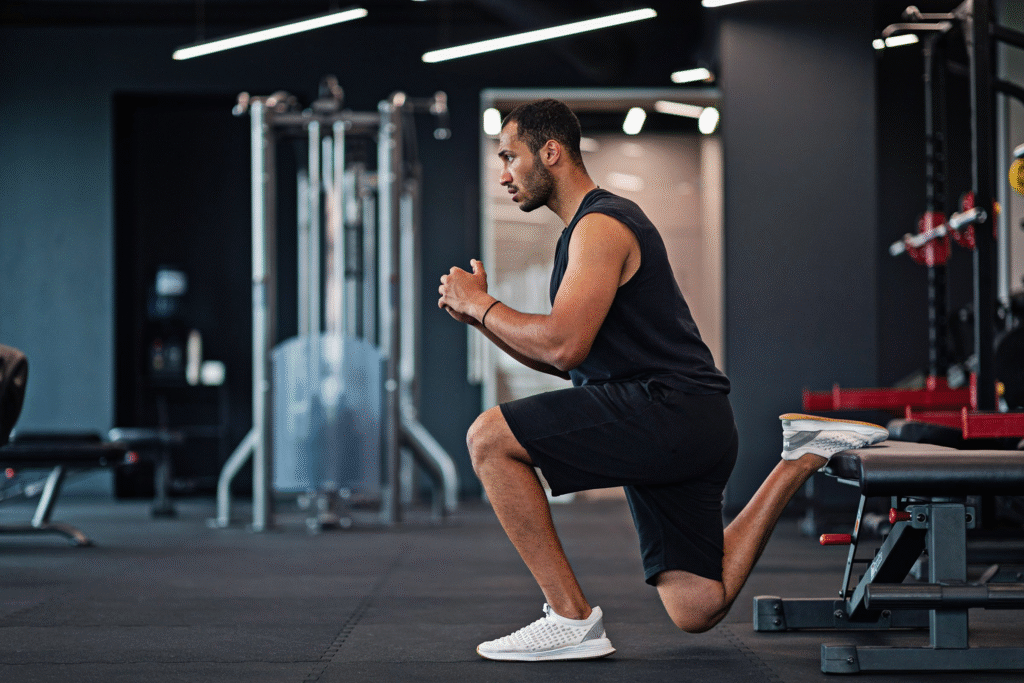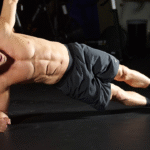Staying active doesn’t always mean hitting the gym or lifting heavy weights. For beginners, starting at home can be the easiest, most comfortable, and cost-effective way to build a fitness habit. The best home workout routines for beginners are simple, require little or no equipment, and can be done in a small space.
Whether your goal is to lose weight, gain strength, or just move more, the right workout plan can help you stay consistent. Let’s dive into beginner-friendly exercises, routines, and tips to make fitness a natural part of your lifestyle.
Why Choose Home Workouts as a Beginner?
Starting your fitness journey at home comes with several benefits:
- Convenience: No need to travel or adjust to gym hours. You can work out anytime.
- Low cost: Most routines use bodyweight or simple equipment like resistance bands or dumbbells.
- Comfort: Many beginners feel shy about exercising in front of others. At home, you can focus without pressure.
- Flexibility: You can modify routines based on your fitness level and progress at your own pace.
Essential Tips Before You Start
Before jumping into routines, here are a few things every beginner should know:
- Warm up first – A 5–10 minute warm-up (like marching in place, light jogging, or dynamic stretches) prepares your muscles and prevents injuries.
- Focus on form – Doing exercises with the correct technique is more important than speed or intensity.
- Start slow – Begin with shorter sessions (15–20 minutes) and gradually build up.
- Rest & recover – Allow your muscles time to recover by taking rest days or alternating between workout types.
- Stay consistent – Even short workouts done regularly are better than long workouts done once in a while.
The Best Home Workout Routines for Beginners
Here’s a structured plan you can follow. It’s divided into full-body, strength, cardio, and flexibility routines, so you get a balanced workout.
1. Full-Body Beginner Routine (No Equipment Needed)
This is perfect for those who want a little of everything.
- Jumping Jacks – 30 seconds
- Bodyweight Squats – 10–12 reps
- Push-Ups (modified if needed) – 6–10 reps
- Glute Bridges – 12–15 reps
- Mountain Climbers – 20–30 seconds
- Plank Hold – 20–30 seconds
Repeat this circuit 2–3 times with 1-minute breaks in between.
2. Strength Training Routine (Build Muscle at Home)
Strength training boosts metabolism and tones your body.
- Squats – 12 reps
- Lunges (each leg) – 8–10 reps
- Push-Ups – 8–12 reps
- Dumbbell Rows (or use water bottles) – 10 reps each side
- Shoulder Press with Dumbbells/Resistance Bands – 10 reps
Do 3 sets with 1-minute rests.
3. Beginner Cardio Routine (Boost Stamina)
Cardio workouts burn calories and improve heart health.
- High Knees – 30 seconds
- Butt Kicks – 30 seconds
- Jump Squats or Step-Ups (using a sturdy chair) – 10 reps
- Shadow Boxing – 30 seconds
- Burpees (modified if needed) – 5–8 reps
Repeat 3 rounds for a 15-minute workout.
4. Core & Abs Beginner Routine
Strong core muscles improve balance and posture.
- Crunches – 10–15 reps
- Leg Raises – 8–10 reps
- Russian Twists (no weight or light weight) – 12 reps each side
- Plank – 20–40 seconds
- Bicycle Kicks – 15 seconds
Do this routine 2–3 times a week.
5. Flexibility & Stretching Routine
Never skip stretching—it prevents stiffness and helps recovery.
- Neck Rolls – 20 seconds
- Arm Circles – 20 seconds
- Seated Forward Fold – 20–30 seconds
- Cat-Cow Stretch – 5–8 reps
- Child’s Pose – 20–30 seconds
- Standing Quad Stretch – 15 seconds each side
A good stretching session can take 5–10 minutes after workouts.
Sample Weekly Home Workout Plan for Beginners
Here’s a 7-day structure you can follow:
| Day | Routine | Focus |
|---|---|---|
| Monday | Full-Body Beginner | Overall strength |
| Tuesday | Cardio Routine | Stamina & calorie burn |
| Wednesday | Core & Abs Routine | Core strength |
| Thursday | Strength Training | Build lean muscle |
| Friday | Cardio Routine | Heart health |
| Saturday | Full-Body Beginner + Stretching | Balance |
| Sunday | Rest / Light Stretching | Recovery |
This way, you stay active all week without overtraining.
How to Stay Motivated at Home
- Set small goals like “10 push-ups without stopping.”
- Track progress with a journal or fitness app.
- Create a workout space at home so you feel ready to exercise.
- Use music or videos to stay energized.
- Celebrate milestones like finishing your first week or increasing reps.
Common Mistakes Beginners Should Avoid
- Skipping warm-ups and cool-downs – This increases injury risk.
- Overdoing it too soon – Going too hard early can cause burnout.
- Not listening to your body – Take breaks when needed.
- Focusing only on one area – Balance strength, cardio, and flexibility.
- Inconsistency – A short workout done daily beats a long workout once in a while.
Conclusion
The best home workout routines for beginners don’t require expensive gear or long hours. With just 20–30 minutes a day, you can build strength, improve stamina, and feel healthier right from your living room. Remember to focus on form, start at your pace, and stay consistent. Over time, these routines can help you build a strong foundation for long-term fitness.
FAQs
1. How many minutes should a beginner work out at home?
Beginners should aim for 15–30 minutes per session, 3–5 times per week. Consistency is more important than duration at the start.
2. Do I need equipment for home workouts?
Not necessarily. Bodyweight exercises are enough to start. Later, you can add resistance bands, dumbbells, or a yoga mat for variety.
3. How soon will I see results from home workouts?
Most beginners notice small changes in 2–4 weeks, like improved energy, better stamina, and slightly toned muscles, if they are consistent.
4. Can beginners lose weight with home workouts?
Yes. Combining regular workouts with a balanced diet can help beginners lose weight and build muscle even without the gym.
5. What’s the best time of day to work out at home?
The best time is whenever you can be consistent. Some prefer mornings for energy, while others enjoy evenings after work. The key is sticking to a routine.



